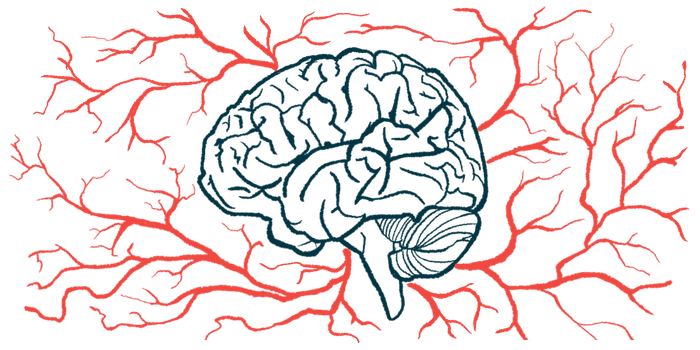Small brain network changes tied to sickle cell pain crises frequency
Understanding 'explosive synchronization' may help predict symptoms

Explosive synchronization in the brain, wherein a small change in the brain network causes it to sync up and undergo a sudden shift in behavior, could be behind frequent pain crises in sickle cell disease, according to a study that may offer a way to better predict the disease’s symptoms.
“These findings could have a significant impact on patients with this disease,” Ying Wang, MD, PhD, professor and investigator at the Indiana University School of Medicine’s Stark Neurosciences Research Institute, said in a university press release. “Unpredictable vaso-occlusive crises, known as pain crises, are extremely acute painful episodes and the hallmark of sickle cell disease. With our research, we could soon be able to predict these episodes and provide interventions sooner for patients.”
The study, “Brain network hypersensitivity underlies pain crises in sickle cell disease,” was published in Scientific Reports.
Sickle cell disease causes red blood cells to become rigid and take on a sickle-like shape that makes them more fragile and likely to break down. A shortage of healthy red blood cells causes anemia and fatigue, among other symptoms. Sickled red blood cells can also get stuck in narrower blood vessels and prevent oxygen from reaching tissues. A lack of oxygen can cause vaso-occlusive crises, that is, episodes of acute pain that can be severe enough to require an emergency visit.
What exactly causes pain crises is unclear, but recent studies suggest an association between explosive synchronization in the brain and hypersensitivity to pain in fibromyalgia. Here, Wang and her research team suggest that changes in how the brain works may also lead to hypersensitivity to pain in sickle cell disease.
Pain sensitivity in sickle cell disease
To test that hypothesis, the researchers compared the brain electrical activity of 32 sickle cell patients with 18 age- and sex-matched healthy people by looking at electroencephalogram (EEG) recordings. Of 25 patients with good-quality recordings, 15 (60%) were women and the median age was 37. Fifteen (60%) were being treated with hydroxyurea, which is approved to reduce the frequency of sickle cell-related pain crises.
EEG recordings taken at rest with their eyes closed revealed that sickle cell patients had lower alpha wave frequencies compared with healthy people (9.01 vs. 9.83 Hz). Alpha waves are oscillations of brain activity associated with a state of wakeful relaxation.
When the researchers reviewed how often nodes in the brain network connect and how different their connections are based on a measurement called frequency disassortativity (FDA), they found no differences between patients and healthy people.
While most connections were similar between the patients and healthy people, there were some pairs of brain regions where the patients’ connections were weaker, indicating there may be subtle differences in how different parts of the brain communicate in sickle cell disease.
Brain activity recorded while pressure was applied on the left leg to cause pain was linked to patient-reported measures of pain, depression, and physical function, but not during rest. Patients with more severe symptoms had stronger FDA.
Stronger FDA was also observed in patients with more frequent vaso-occlusive crises or whose EEG recordings were taken within 30 days of a crisis, suggesting changes in how the brain network is organized may contribute to crises’ frequency and severity.
To better understand this, the researchers used computer models to simulate the brain network. They found that stronger FDA resulted in increased sensitivity and complexity in the brain, making it more likely to undergo a sudden shift in activity, similar to explosive synchronization.
“The present study establishes a significant link between pain in [sickle cell disease] and a universal network mechanism, [explosive synchronization],” the researchers wrote. “This enhanced understanding will facilitate future investigations on predicting pain crises and refining pain management strategies.”
Wang said the researchers’ finding both enhances understanding sickle cell disease’s pain mechanisms and “potentially guides clinical diagnosis and the prognosis of pain management.”
“For example, early identification of an upcoming vaso-occlusive crisis might allow treatment to preempt [the] crisis,” Wang said.







